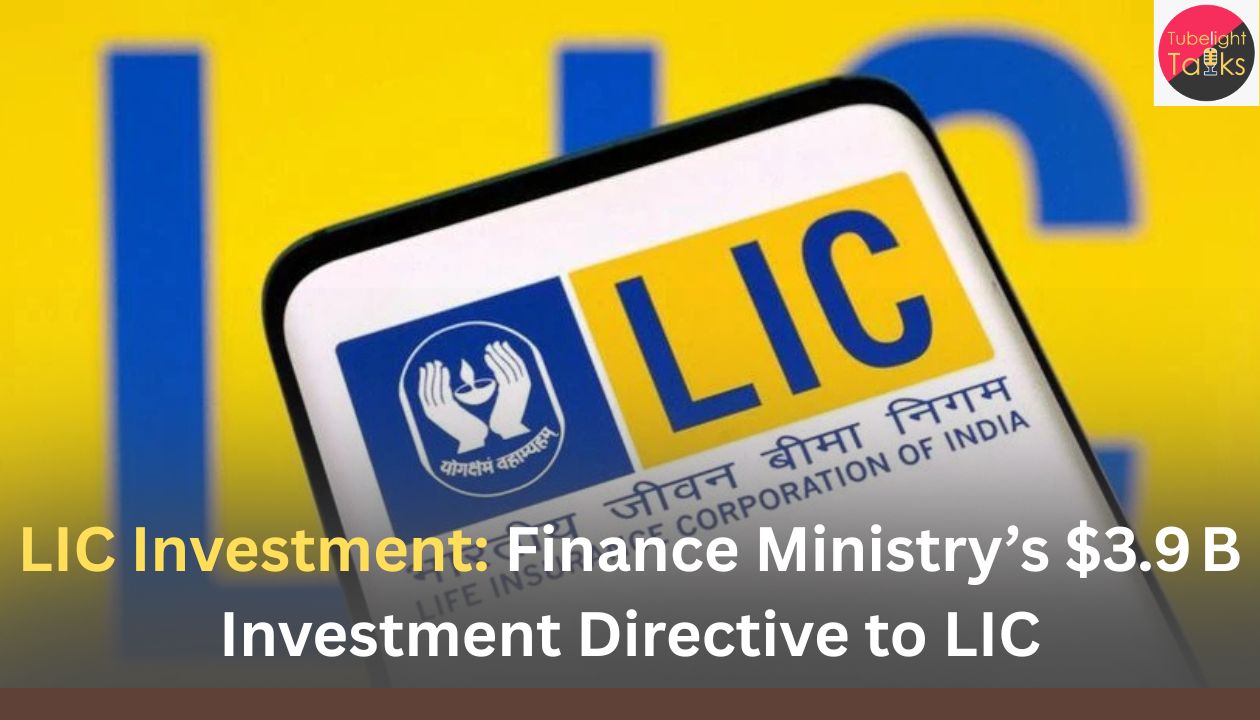LIC Investment: In May 2025, internal documents show that the Indian finance ministry, through the Department of Financial Services (DFS) and in coordination with NITI Aayog, approved a plan to steer approximately $3.9 billion of LIC funds into the Adani Group. Of that, roughly $3.4 billion was targeted for bonds issued by Adani subsidiaries (ports, green energy) and about $507 million for increasing equity stakes in some Adani companies.
The timing coincides with Adani’s urgent debt refinancing needs and investor caution following the 2023 Hindenburg Research report and U.S. regulatory investigations.
Why It Matters
LIC’s Institutional Role
LIC is India’s largest life‑insurer, with hundreds of millions of policyholders, including many low‑income and rural customers. Its investment decisions affect not only its balance‑sheet, but a large segment of Indian household savings.

Public Funds & Corporate Risk
Directing LIC funds into a single private conglomerate—especially one under regulatory and legal clouds—raises questions about risk concentration, conflict of interest and state‑backed support for business groups.
Signalling & Market Confidence
The documents show that part of the rationale was to “signal confidence in Adani Group” and “encourage participation from other investors” at a sensitive juncture.
Technical Details of the Investment
In one observed transaction, LIC fully subscribed to a 15‑year non‑convertible debenture (NCD) worth ₹5,000 crore (≈ US$585 million) issued by Adani Ports and Special Economic Zone Ltd. (APSEZ). The coupon was 7.75 %, lower than previous long‑term corporate bonds issued by Adani. Analysts noted this reflected willingness of LIC to take substantial exposure. Documents also flagged risk: LIC had prior losses on Adani investments and the finance ministry flagged that “Adani’s securities are sensitive to controversies … causing short‑term price fluctuations.”
Risk, Governance & Transparency Concerns
Risk Concentration
Excessive exposure to a single conglomerate increases systemic risk. If Adani’s business deteriorates, LIC’s policy‑holders could suffer indirectly.
Governance & Fiduciary Duty
Critics argue directing LIC to invest in Adani blurs the line between independent investment management and state‑directed corporate support. Former analyst Hemindra Hazari said such moves create “a different set of rules” for politically connected firms.
Political & Public Fund Questions
Opposition parties have accused the government of using LIC as a fund for corporate bail‑outs or preferential treatment. For example, Rahul Gandhi questioned the investment of ₹5,000 crore in Adani Ports as misuse of public funds.
Broader Impact on Markets and Economy
Capital Flows & Investor Confidence
The move may reassure domestic investors, but international investors might view this as increased state risk or corporate‑governance weakness.
Insurance Sector & Household Savings
LIC’s financial health is closely watched because of its role in life‑insurance. Increased risk in its portfolio could eventually affect policy returns or solvency margins.
Corporate Culture & Market Discipline
Large‑scale state‑linked bail‑outs or support could weaken market discipline—if certain firms assume implicit backing, governance standards may suffer.
Investment and Responsibility
In the realm of finance, the teachings of Sant Rampal Ji Maharaj remind us that true value lies not merely in profits or growth, but in service, integrity and collective welfare. When a state‑owned insurer invests public premiums into a politically connected business group under troubled circumstances, the real question is: whose welfare is being served? According to the satgyan path, investments should uplift humanity, safeguard trust and foster moral purpose—not simply rescue a firm or group.
Read Also: India’s Union Cabinet Approves Rs 7,798 Crore for Key Railway Projects and Space Sector Growth
What to Watch Going Forward
Outcome for LIC
Will there be clear disclosure of LIC’s exposure to Adani companies, and will its board and regulator (Insurance Regulatory and Development Authority of India) impose stricter norms?
Adani’s Financial & Legal Trajectory
How will ongoing U.S. investigations and global investor behaviour impact Adani’s business? A deterioration could hit LIC’s exposure.
Policy & Governance Reforms
Will the government strengthen fire‑walls between state‑owned investors and politically connected corporates? Will investment mandates be clearer?
FAQs: LIC & Adani Support Plan
Q1. What is the size of the investment plan?
The plan directs about $3.9 billion of LIC funds toward Adani Group bonds and equity stakes.
Q2. Why is this considered controversial?
Because the Adani Group faces U.S. regulatory and legal scrutiny, and LIC is a public‐sector insurer whose policy‑holders are mostly ordinary citizens. Critics argue the risk and governance implications are high.
Q3. What specific investments have happened?
LIC fully subscribed to a ₹5,000 crore (≈ US$585 million) NCD issuance by Adani Ports in May 2025.
Q4. What are the key risks for LIC?
Risks include governance failures at Adani, legal or regulatory shocks, risk concentration in one corporate group, potential losses being borne indirectly by policy‑holders.
Q5. What is being asked of the government or regulator?
Calls are being made for transparency on LIC’s investment exposure, stronger governance safeguards, clear separation between state investor and corporate bail‑outs, and protection of policy‑holder interests.










